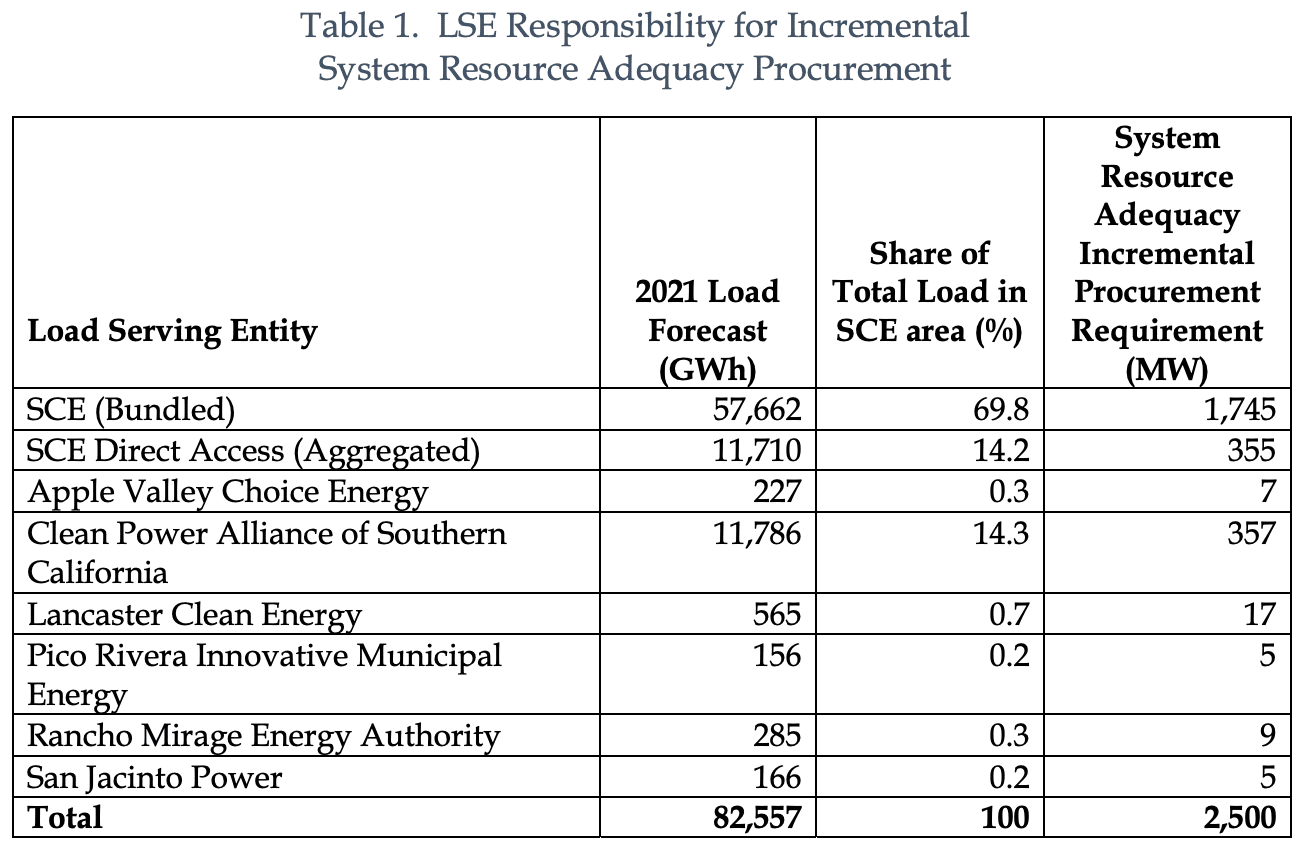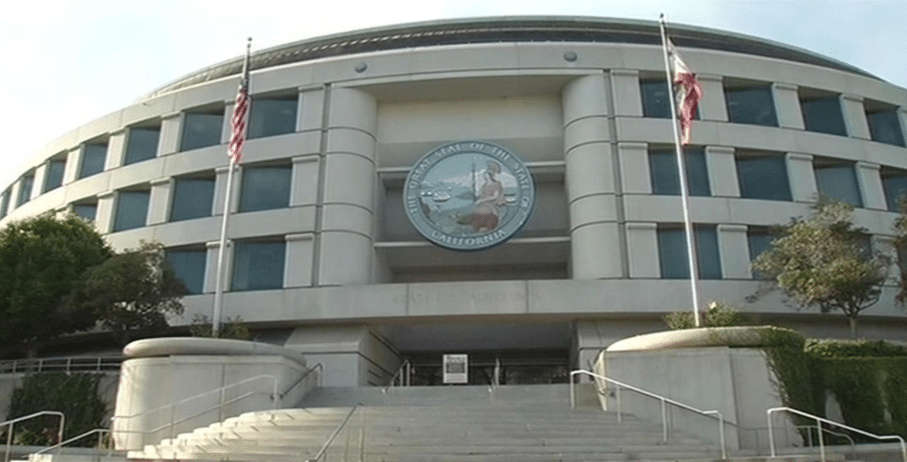The California Public Utilities Commission (CPUC) has issued a decision within which regulators have identified “the potential for electricity system resource adequacy shortages beginning in 2021,” which is a way of using a lot of technical words to say that they’re facing a shortfall of generation on the grid.
So, when one decides there isn’t enough energy generation on the grid, what is done? In the case of CPUC a proposed decision is sent out, calling for the procurement of 2.5 GW of new energy resources within the transmission access area of Southern California Edison (SCE). And so, just like that, an open market nearly equivalent to the entire sum of solar that has been installed in Massachusetts to date has opened in California.
Now, not to kill the fun just as it’s starting, but there’s no guarantee that the sources procured will end up being solar facilities. The proposal calls for ‘all-source’ procurement, opening the door for natural gas-fired plants, energy storage, demand response and any other potential non-fossil generation facilities.
Regardless of source, 60% of that 2.5 GW figure is required to come on-line by August 1, 2021, 80% by August 1, 2022, and 100% by August 1, 2023.
Further broken down, the responsibility of procurement is not placed entirely upon the shoulders of SCE, however the majority is.

2.1 of the 2.5 GW will be procured by SCE, with local community choice aggregators picking up the tab for the last 400 MW. These smaller-procurement initiatives will be led by Clean Power Alliance of Southern California’s 357 MW share, a share which far outweighs the rest of the smaller requirements.
The need for procurement has been identified due to a medley of projected energy shakeups in the regions future. First come the closures, of which their are two kinds anticipated: nuclear power plants and once-through cooling (OTC) plants across the coast. For anyone wondering, OTC generates energy via the process of diverting water from bodies of water to cool steam after it has passed through a turbine to create power. The process has been found to entraps and kill billions of aquatic organisms annually, mainly fish larvae and shellfish, as well as remove water from habitats used by aquatic organisms and fauna.
However, the CPUC is operating under the idea that the procurement objectives may not be met and, to prepare for such an outcome, has advised that the State Water Resources Control Board extend of the once-thru-cooling (OTC) compliance deadlines for units currently slated to retire by December 31, 2020, for capacity of at least 2.5 GW and up to 3.75 GW, for up to three years beyond their current 2020 deadlines.
Outside of plant closures come projections of projections tightening capacities for both natural gas systems and energy imported from other states.
Even with all the intricacies of the proposal, this is a massive opportunity for solar development in a state that isn’t exactly short on massive opportunities for solar development. It’s not every day that an energy need equivalent to the capacity of the state with the 8th most installed solar in the nation comes along. Even more rare is the need arising in a state which has shown a historic propensity towards solar as a generation source.
This content is protected by copyright and may not be reused. If you want to cooperate with us and would like to reuse some of our content, please contact: editors@pv-magazine.com.









How are you going to regulate frequency in an electric grid that is only supplied during the day with photovoltaic electricity? And please don’t say batteries. That technology doesn’t exist yet. The largest batteries out there are about 2 megawatts. I built a 10000 watt photovoltaic system for my family. And it works well, because it is great connected to a system that is controlled by rotating generators. I have yet to see a description of a system that functions without them.
Hello Mr. Taylor,
Thanks for reading pv magazine. The largest batteries that we have found are hundreds of megawatts, not two. However, batteries are not the answer – inverters are. Inverters can set frequency on the grid. The system of using large spinning masses as frequency regulation is an artifact of 20th century power systems, and furthermore does not stop frequency from deviating during times of supply/demand imbalance – they merely slow down the frequency deviation.
I cover these issues in full here: https://pv-magazine-usa.com/2019/03/01/inertia-frequency-regulation-and-the-grid/
– Christian
Rick Taylor: Perhaps you need to read up on what has happened in Australia. The TESLA energy storage system installed across the Neoen Wind farm in 2017 is 100MW/129MWh and was online before scheduled. The status quo coalies or the coal-ilition blew off the storage system as a “six minute solution”. During a particularly hot day, the old coal fired generation plant Loy Yang faulted offline for some unknown reason. The TESLA energy storage system and the wind farm acted like a ‘dispatchable’ generation resource and kept the grid from cascading failure, while Loy Yang employees reset the plants fault and got it back online. The first year of service for this TESLA energy storage system created a ‘stacked’ revenue stream of $17 million dollars from just this one asset.
Get energy storage down to a $75 to $85/kWh of storage and I’ll show you one of many solar PV systems that can and will function without rotating generators, transformer step power losses or connections to the grid at large. Legacy, is not the excuse you buy from the electric utility, it is what you do to level the playing field and leave to the next generation.